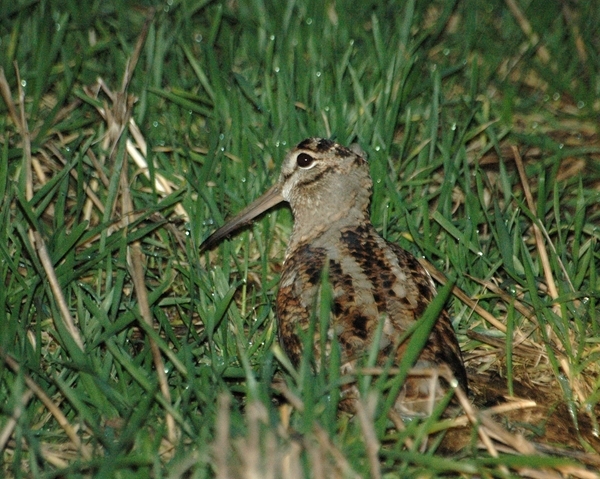
THE woodcock season is set to be better than expected, according to an expert from the Game & Wildlife Conservation Trust (GWCT).
Andrew Hoodless, who is head of wetland research at GWCT, has had many reports of large numbers of woodcock arriving in the latter half of November.
This has come as a slight surprise as there were concerns of a poor breeding season resulting from the long dry summer, particularly in Scandinavia.
“I’ve received word from shoots at various locations across the country during early December, all indicating that woodcock numbers are slightly above average. In some western areas, such as parts of Ireland and Cornwall, numbers are well above average and it is looking like it will be a reasonably good woodcock season,” explained Dr Hoodless.
The reasons behind the higher woodcock numbers are not yet completely clear.
It is possible that conditions in spring on the main breeding grounds in Russia and Scandinavia may have resulted in better chick survival immediately after hatching, when they are vulnerable to cold, wet weather, and compensated for higher mortality during the dry weather later in the summer.
Summer conditions were also variable across Europe, with central Russia not experiencing the high temperatures recorded in Scandinavia, but the autumn weather is another factor.
The woodcock influx this year coincided with sudden, widespread snowfall in Scandinavia during the third week of November, coupled with easterly winds from central Europe.
Rigorous woodcock ringing efforts by Dr Hoodless’ team and the Woodcock Network are providing valuable information on this iconic species.
Dr Hoodless added: “At our regular study site in Hampshire, woodcock numbers are almost up to their usual mid-winter peak and, of particular interest, is the fact that we are catching a high proportion of first-year birds, most probably indicating that the breeding season was better than we had feared.”
Owen Williams, director of the Woodcock Network, concurs: “I have been seeing above average numbers of woodcock here in mid-Wales when out lamping and have also been catching a high proportion of first-years. It is encouraging to see such good numbers, but it has been quite a surprise.”
The purpose of GWCT’s research programme is to better understand these annual fluctuations in woodcock numbers and help provide advice that will ensure a stable trend in the long term.
Dr Hoodless continued: “Many shoots have heeded our advice to hold off shooting woodcock until after 1st December, to help protect our resident breeders, but numbers this winter are now at a level where shoots adopting a measured approach should be able to take a few.”
The woodcock season finishes at the end of January.
Furthermore, the GWCT has launched an online survey to help fill some of the gaps in our knowledge of woodcock distribution and abundance, and to capture current shooting and habitat management practice.
The survey is simple to complete and caters for information from shoots and individual guns. To take part, visit https://www.surveymonkey.co.uk/r/gwctwoodcocksurvey
Take Survey >
Notes to editors
The Game & Wildlife Conservation Trust – providing research-led conservation for a thriving countryside. The GWCT is an independent wildlife conservation charity which has carried out scientific research into Britain’s game and wildlife since the 1930s. We advise farmers and landowners on improving wildlife habitats. We employ more than 60 post-doctoral scientists and other research staff with expertise in areas such as birds, insects, mammals, farming, fish and statistics. We undertake our own research as well as projects funded by contract and grant-aid from government and private bodies.
For information, contact:
Eleanor Williams
Telephone: 07592 025476
Email: press@gwct.org.uk